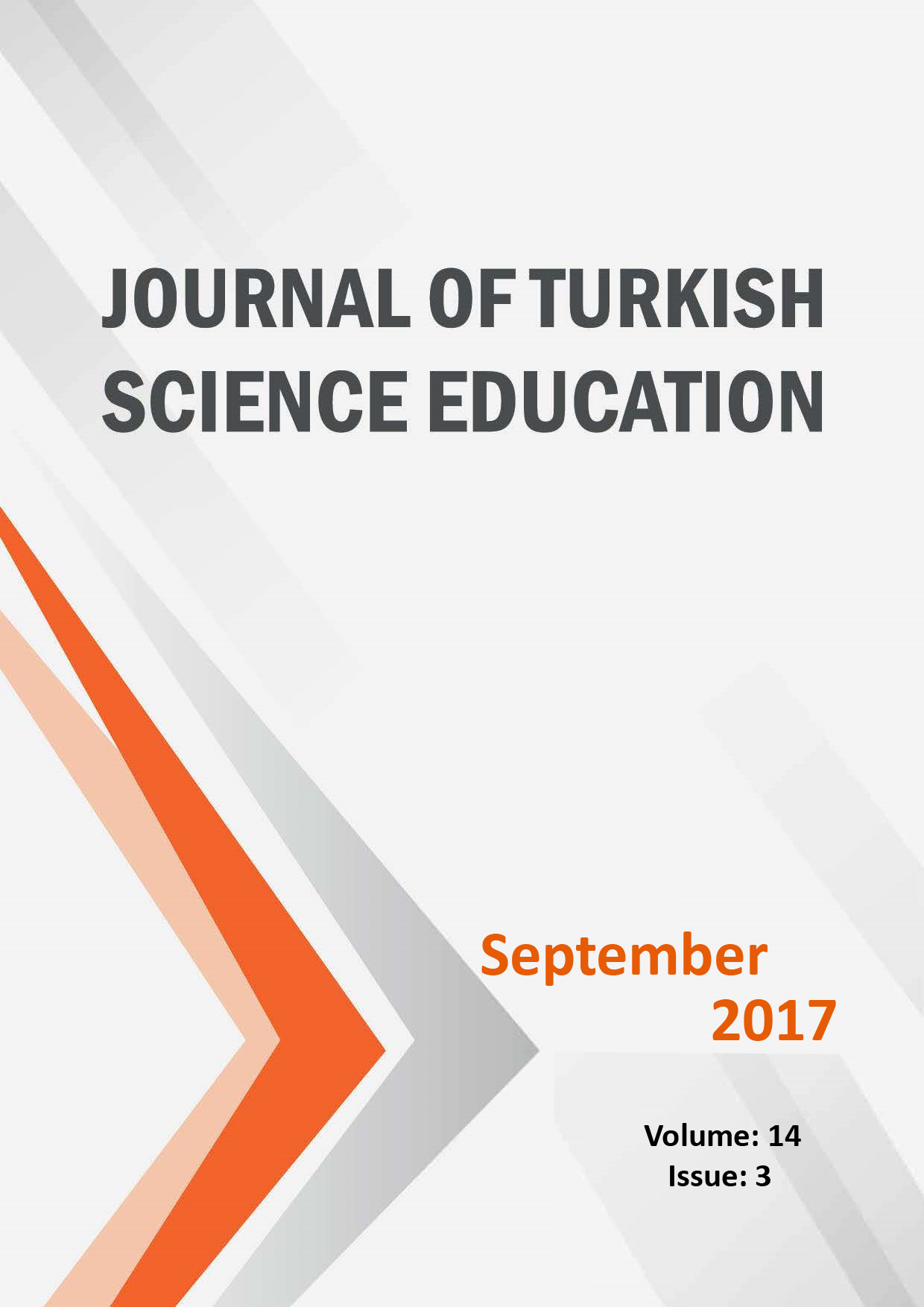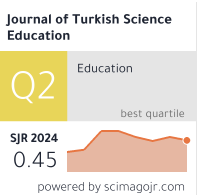Chemical literacy of teaching candidates studying the ıntegrated food chemistry ethnosciences course
DOI:
https://doi.org/10.36681/Keywords:
Ethnosciences, integrated food chemistry ethnoscience, chemical literacyAbstract
This research aimed to describe the chemical literacy of teaching candidates studying the integrated food chemistry ethnosciences course. The research sample comprised teaching candidates studying chemistry in a teachers’ education program in Central Java, Indonesia. In this descriptive research method, data was collected by using a chemical literacy test in narrative form regarding material integrated ethnosciences carbohydrates that have been declared valid by experts with a reliability of 0.81. The results revealed that the content aspects of students’ average chemical literacy achievement amounted to 31.8% included in the low category. Similarly, for science literacy achievement scores in the process domain, the indicators identifying scientific questions of 3.20 evaluate and design a scientific investigation of 2.26 and identify the scientific evidence of 2.95 from a maximum score of 5.0. These students’ chemical literacy achievement is also in accordance with the results of the analysis of student explanations on selected chemical concepts that are seen mostly in the category of partially correct answers. Therefore, it is necessary to improve the quality of learning that explicitly integrates aspects necessary to improve students’ chemical literacy.
Downloads
References
American Association for the Advancement of Science [AAAS]. (1993). Benchmarks for science literacy: A Project 2061 report. New York: Oxford University Press.
Anelli, C. (2011). Education connection; Scientific Literacy: What Is It, Are We Teaching It, and Does It Matter? American Entomologist, 57(4), 235-243.
Bacanak, A. (2002). A study about the evaluation of the science student teachers’ scientific literacy and application of science-technology-society course, Unpublished Master Thesis. Trabzon, Turkey.: Karadeniz Technical University.
Bacanak, A., & Gὅkdere, M. (2009). Investigating level of the scientific literacy of primary school teacher candidates. Asia-Pacific Forum on Science Learning and Teaching, Volume 10, Issue 1, Article 7, p.1 (Jun. 2009), 1.
Bond, D. (1989). In pursuit of chemical literacy: A place for chemical reactions. Journal ofChemical Education, 66(2). http://dx.doi.org/10.1021/ed066p157, 157.
Bybee, J. (1997). Scientific literacy: a German perspective. Kiel, Germany:: Institute for Science Education.
Bybee, R. W., Mc Crae, B., & Laurie. (2009). “PISA 2006: An Assessment of Scientific Literacy”. Journal of Research in Science Teaching,46(8), 865–883.
Cavanagh, S. (2008). Frustrations give rise to new push for science literacy. Education Week, 27(26), 12.
Celik, S. (2014). Chemical Literacy Levels of Science and Mathematics Teacher Candidates. Australian Journal of Teacher Education Vol 39 issue 1, 1-15.
Çepni, S., & Bacanak, A. (2002). “A Study On Determining Mathematics Student Teachers’ Scientific Literacy”, Education: Changing times, changing needs, First International Conference on Education, May 8-10. Gazimagusa, Turkish Republic of Nothern Cyprus.: Faculty of Education Eastern Mediterranean University.
Glenn, V. L., & Janusa, M. A. (2010). Chemistry the Core Concepts. North Carolina: Kona publishing and Media Group.
Gunstone, A. (. (2014). Developing Sustainable Education in Regional Australia. Melbourne: Monash University Publishing.
Hirca, N., Calik, M., & Akdenis, F. (2008). “Investigating 8-grade students conception of energy and related concept”. Turkish Journal of Science Education, Volume 5(1), 75-87.
Holbrook, J. (2005). Making Chemistry Teaching Relevant. Chemical Education International, Vol. 6, No. 1, 2-12.
Holbrook, J; Rannikmae, M. (2009). “ The Meaning of Scientific Literacy”. International Journal of Environmental & Science Educational, 4 (3), 144-150.
Kelter, P., Mosher, M., & Scott, A. (2009). Chemistry: The Practical Science. Boston: Houghton Mifflin Company.
Lin, S.-Y. (2009). Chemical Literacy and Learning Sources of Non-Science Major Undergraduates on Understandings of Environmental Issues. Chemical Education Journal (CEJ), Vol. 13, No. 1.
Mann, M., & Treagust, D. F. (2010). Students’ conceptions about energy and the human body. Science Education International Vol.21, No.3, September 2010, 144-159.
Marks, R., & Eilks, I. (2009). Promoting Scientific Literacy Using a Socio-critical and Problem-Oriented Approach to ChemistryTeaching: Concept, Examples, Experiences. International Journal of Environmental & Science Education. 4( 3), 231-245.
Millar, R. (2006). Twenty-First century Science: Insight from the design and implementation of a scientific literacy approach in school science. International Journal of Science Education 28(13), 1499- 1521.
Murcia, K. (2007). Science for the 21st century: Teaching for scientific literacy in the primary classroom. Teaching Science, 53(2)., 16.
National Research Council (NRC). (1996). National Science Education Standards. Washington: National Academy Press.
OECD. (2009). PISA 2009 Assessment Framework – Key Competencies In Reading, Mathematics And Science. Paris: Organization for Economic Cooperation and Development (OECD).
OECD. (2013). Pisa 2015 Draft Science Framework March 2013. Retrieved from www.oecd.org [akses 28 November 2013]
Rahayu, S. (2016). Mengembangkan Literasi Sains Anak Indonesia Melalui Pembelajaran Berorientasi Nature of Science (NOS). Pidato Pengukuhan Jabatan Guru Besar dalam bidang Ilmu Pendidikan IPA pada Sidang Terbuka Senat Universitas Negeri Malang tanggal 17 Maret 2016. Malang: FMIPA Universitas Negeri Malang.
Semiawan, C. (2000). ‘‘Relevansi Kurikulum Pendidikan Masa Depan’’ dalam Sindhunata (ed) Membuka Masa Depan Anak-anak Kita. . Jogyakarta: Penerbit Kanisius.
Shwartz, Y., Ben-Zvi, R., & Hofstein, A. (2005). The importance of involving high-school chemistry teachers in the process of defining the operational meaning of 'chemical literacy'. International Journal of Science Teaching, 27, 323-344.
Shwartz, Y., Ben-Zvi, R., & Hofstein, A. (2006). Chemical literacy: what it means to scientists and school teachers? Journal of Chemical Education, 83, 1557-1561.
Suastra, I. W., Tika, K., & Kariasa, N. (2011). Efektivitas Model Pembelajaran Sains Berbasis Budaya Lokal untuk Mengembangkan Kompetensi Dasar Sains dan Nilai Kearifan Lokal Di SMP. Jurnal Penelitian dan Pengembangan. 5(3), 258-273.
Sumarni, W., Sudarmin, Wiyanto, & Supartono. (2016a). The Reconstruction of Society Indigenous Science into Scientific Knowledge in the Production Process of Palm Sugar. Journal of Turkish Science Education. 13(4), 281-292, doi: 10.12973/tused.10185a).
Sumarni, W., Sudarmin, Wiyanto, & Supartono. (2016b). Preliminary Analysis of Assessment Instrument Design to Reveal Science Generic Skill and Chemistry Literacy. International Journal of Evaluation and Research in Education (IJERE), 5(4), 332-242.
Thummathong, R., & Thathong, K. (2016). Construction of a Chemical Literacy Test for Engineering Students. Journal of Turkish Science Education, 13(3), 185-198.
Wei, B., & Thomas, G. (2005). “Rationale and Approaches for Embedding Scientific Literacy into the New Junior Secondary School Chemistry Curriculum in the People’s Republic of China”. International Journal of Science Education, 27(12), 1477-1493.
Witte, D., & Beers, K. (2003). Testing of chemical literacy. Chemical Education Internasional, AN-3, 4(1), 1-15.
Downloads
Published
Versions
- 15.09.2017 (3)
- 11.06.2024 (2)
- 15.09.2017 (1)
Issue
Section
License

This work is licensed under a Creative Commons Attribution-NonCommercial-NoDerivatives 4.0 International License.
This license enables reusers to copy and distribute the material in any medium or format in unadapted form only, for noncommercial purposes only, and only so long as attribution is given to the creator. CC BY-NC-ND includes the following elements: Credit must be given to the creator; only noncommercial uses of the work are permitted; no derivatives or adaptations of the work are permitted.



